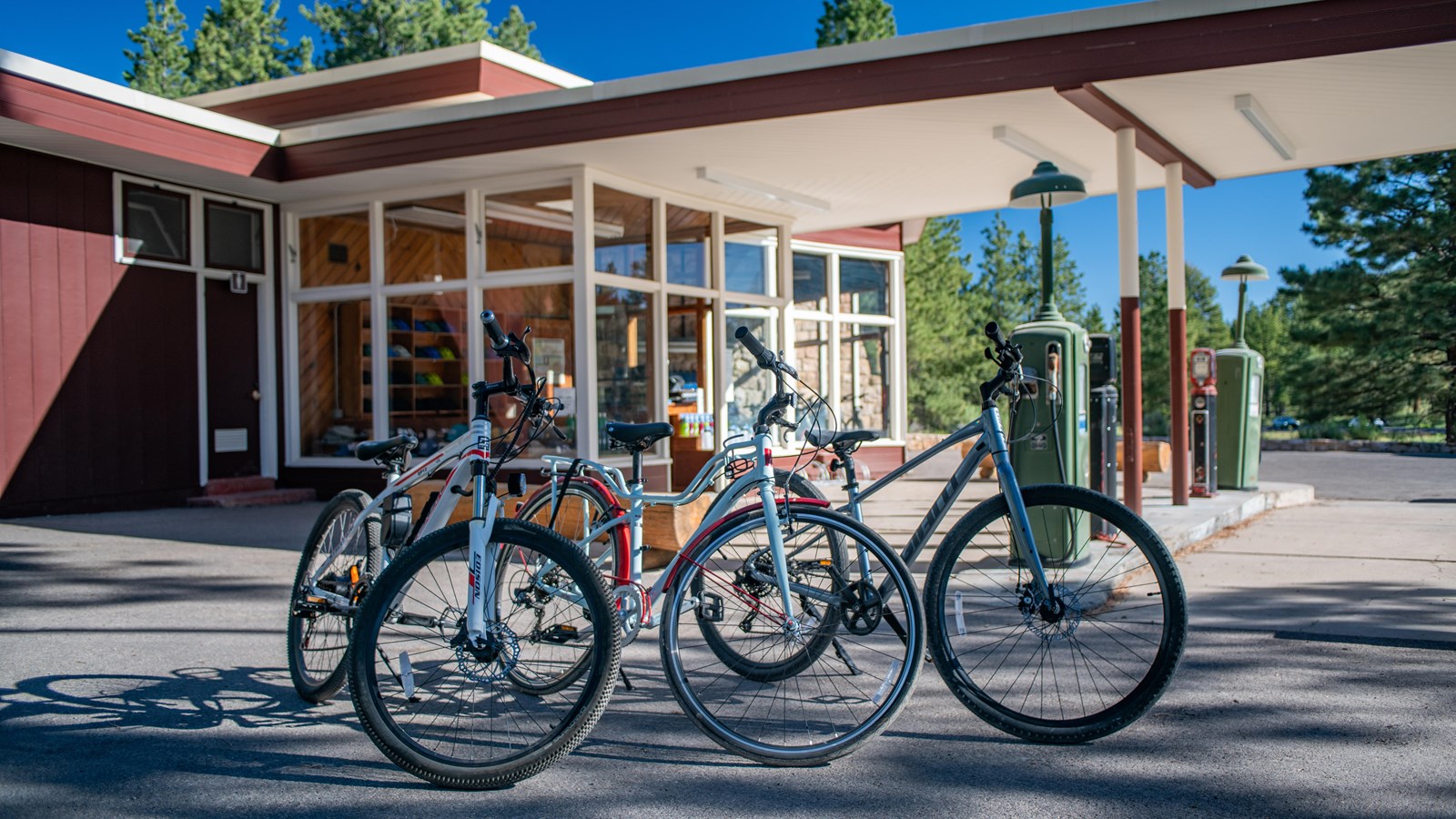Last updated: September 10, 2024
Place
Historic Service Station and Bike Rentals

NPS Photo
Bicycle - Rental, Restroom
Bike Rentals
Want to explore Bryce Canyon by bicycle but forgot yours at home? You can now rent bicycles at the Historic Service Station!
- Helmet and lock included with all rentals
- E-bikes, mountain bikes, and smaller sized bikes available
- E-bike rates:
- 2 hours: $60
- 4 hours: $80
- All-day rental: $100
- Standard bike rates:
- 2 hours: $25
- 4 hours: $35
- All-day rental: $45
The Historic Service Station
Built between 1947 and 1948 at a cost of $29,275, this Historic Service Station represents the last major improvement constructed by the Utah Parks Company (UPC) within Bryce Canyon National Park. As World War II ended in 1945, the nation's love of automobile travel begin to outcompete the model of railroad and bus-facilitated tourism that the UPC had been providing in the park since the early 1920s. This change in transportation methods paralleled an increase in visitation. While in 1924, visitation totalled 17,213 people, by 1948 that number had increased to 175,975. Between 1946 and 1949 only 3.28 percent of the park's annual visitation visited the park as UPC passengers. To try and meet the increased demand of these visitors and their automobiles, the Service Station was constructed to provide fuel and full service facilities--paralleling developments in other western parks.
Although the building was designed by architects under contract to the UPC, the National Park Service (NPS) approved the design. In this period, some NPS architects rejected the "exaggerated" rustic style of the 1920s, 30s, and early 40s in favor of building that reflected simpler, contemporary design principles. For this particular building, form defines function. The station is significant as an example of "roadside architecture". This style is a distinctly American contribution to the built environment, indicative of a period of service station construction during which buildings were designed to accomodate a full range of services including mechanical repairs. The irregularly shaped, one-story building rests on a concrete foundation. The west elevation, curved wall is constructed of rough cut, regularly coursed stone from a local quarry.
The Service Station closed in 1988, but is now listed on the National Register of Historic Places. Future uses for the building are currently being considered.
The Utah Parks Company at Bryce Canyon
The Utah Parks Company (UPC) was a subsidiary of Union Pacific Railroad, which owned and operated restaurants, lodging, and bus tours in Bryce Canyon and Zion National Parks, the north rim of Grand Canyon National Park, and Cedar Breaks National Monument from the 1920s until 1972. Before Bryce Canyon became a national park, the Union Pacific Railroad had conceived these parks and monuments as forming a "Grand Circle", which would ultimately be visited first by arrival at a rail depot in Lund, Utah (near present day Cedar City) and then by bus to the UPC-owned El Escalante hotel in Cedar City, and then to the parks themselves. To accomodate these visitors, the Utah Parks Company financed the construction of the Bryce Canyon Lodge, numerous cabins and other less permanent accomodations, as well as the Historic Service Station. After the establishment of Bryce Canyon National Park in 1928, UPC would serve as the park's sole concessionaire until competition from private motor vehicles and other operating costs would lead to their liquidiation and donation of all assets within the park to the National Park Service in 1972.
